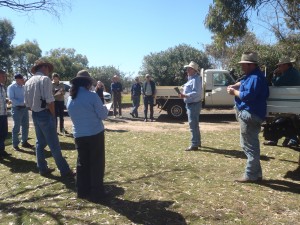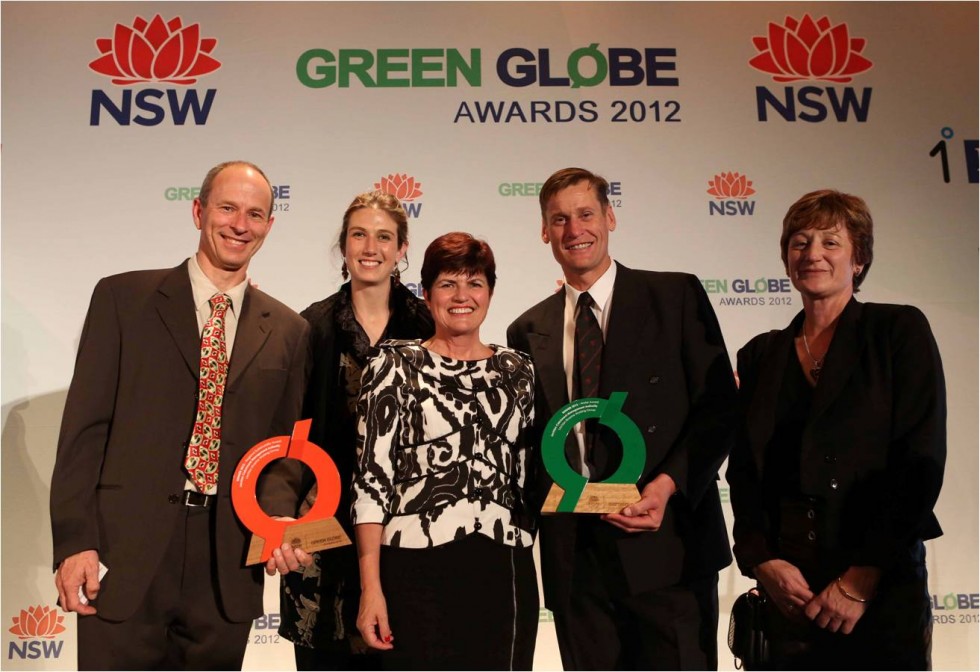
LEWMP and LRWG is delighted to have been recognised by
- Water Category Award (winner, NSW Government Green Globe Awards 2012) (*link each award title to new post)
- Regional Sustainability Award (winner,NSW Government Green Globe Awards 2012)
- Water: Our Most Precious Resource (finalist, national Banksia Environmental Awards 2012)
GG award logo | Banksia award logo
The achievements of the LEWMP and LRWG were formally recognised at the NSW Government’s Green Globe Awards ceremony (3 September 2012), winning both the 2012 Water Category Award and the Regional Sustainability Award. On the back of the success at the Green Globes, the LRWG was invited to enter the national Banksia Environmental Awards, which are regarded as the most prestigious environmental awards in Australia, and were successful finalists in the category Water: Our Most Precious Resource. Both the Green Globe and Banksia Environmental awards recognised the following achievements of the LRWG and LEWMP:
The LEWMP as example of innovative practice and standards developed:
The LEWMP is unique and innovative for two reasons.
Firstly, it is currently the only ‘live or dynamic’ web-based plan of its kind in NSW as the LRWG recognised early on in the development of the plan (given the scale and diversity of ecological assets, values and functions the Lachlan Valley, and the detail and depth of information required to coordinate across all stakeholders) it would soon be out-of-date by the time it was approved and published in hard copy. The website model also set a new standard in implementing principles of adaptive management, and in transparency and accountability in e-water decision making. Thus, part of the LRWG success has been based on the framework provided by the LEWMP, which as an interactive tool can be regularly improved and up-dated, and is easily accessible to the public. By using a web-based tool the LEWMP has potential to be highly adaptive as:
- New knowledge is easily added and recent watering actions quickly reported on in real-time;
- Local events and research projects promoted;
- Functions as a ‘library/database’ for information resources for Lachlan riverine environment with open access to public where copyright permits;
- Allowing community to provide feedback as decisions are made, and as such, enables LRWG to track their own progress and achieve greater transparency.
Secondly, the plan is unique in that the scope covers the entire Lachlan Valley and the broader context of implementing environmental watering actions (i.e. land management, research, and complimentary monitoring and natural resource management projects). As the catchment is relatively large and local rainfall highly variable, this often necessitates immediate/reactive decision-making. Also, unike some other iconic systems in the Murray–Darling Basin (MDB) there are a multitude of potential target assets, values and functions in the Lachlan (eight nationally and nine regionally significant wetlands) across a diverse range of water body types, spanning over two-thirds of the Lachlan River floodplain (1484 river kilometres in length). The system is also rich in water-dependent native species with potentially conflicting water requirements, and an endangered ecological community (EEC) that reflects the rarity, vulnerability and habitat importance of the region. It hosts over 40 species of waterbirds, including internationally listed colonial-nesting species (e.g. JAMBA) in addition to Australian listed threatened species. The geomorphic nature of the river channel itself makes it difficult to either target some priority wetlands (e.g. immense volumes of water required, sometimes prohibitive volumes due to nuisance flooding or limited e-water) or alternatively, to predict where e-water will end up in the system. Often the same actions and antecedent conditions can produce very different outcomes. As the Lachlan River is classified as a ‘losing river’ due to the complexity of geomorphic forms, it is difficult to predict where and how much surface water is transferred to groundwater recharge.
Thus, a broad, strategic planning framework was required which was also a suitable backdrop to a dynamic and adaptive decision-making body like the LRWG. Hence, the adaptive Lachlan Environmental Water Management Plan (LEWMP) as a web-based ‘live’ plan emerged as an innovative solution, which captures the complexity of the system at appropriate nested spatial and temporal hierarchies (e.g. Annual Watering Plan are within the LEWMP itself).
- Excellence in the field of localism (governance) and collaboration in action:

Representatives of the Willandra Creek water users meet to discuss local issues with the LRWG and Commonwealth Environmental Water Office (CEWO) representatives at Morrisons Lake on Willandra Creek (Image: Lisa Thurtell, OEH, 15 September 2011)
The LRWG is recognised as an established, ‘effective mechanism’ for consultation, feedback, tapping into local knowledge and experience, and for delivering co-operative water regimes that meet the environmental watering requirements identified in the LEWMP, Annual Watering Plans, and the proposed Basin Plan. Media Release quotes published immediately after the Green Globe Awards by Troy Grant (Member for Dubbo, Parliamentary Secretary for Natural Resources) and Mary Ewing (Executive Officer, Lachlan Valley Water) encapsulate these qualities of success.
- Ecological outcomes from environmental flow delivery and related projects:
- Inter-agency recognition: Given the achievements of the LRWG and LEWMP above, the Lachlan Valley (and LEWMP) has been singled out as one of only two “pilot valleys” for transition under the Basin Plan to long-term watering plan (LRWP) and also water resource plans (WRPs) in place of WSPs.

